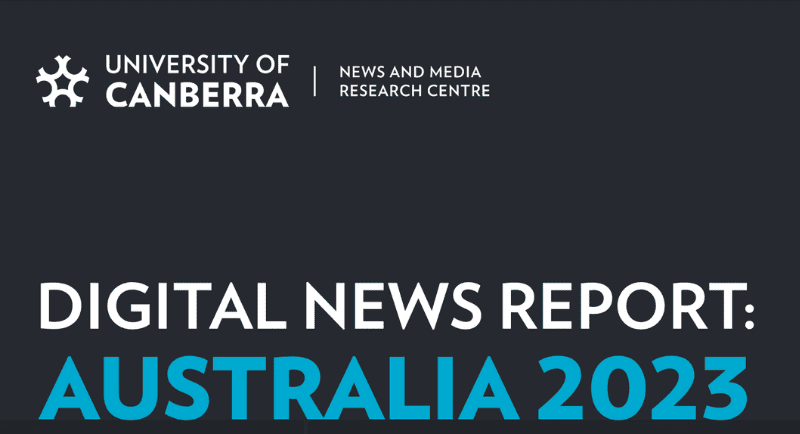The University of Canberra’s News and Media Research Centre have released the Digital News Report: Australia 2023.
This year’s report shows that Australians lead globally when it comes to paying for online news and that trust in general news has slightly increased since last year. However, women are losing trust in news and gender gaps become more evident this year in terms of news consumption, trust, engagement and avoidance.
The use of social media channels for accessing news is on the rise with GenZ increasingly getting their news from Instagram and Tik Tok.
The survey also found that one in five Australians pay for online news, which is up by four percentage points when compared to 2022, and placed well above the global average of 16 per cent. The biggest growth was seen among those who pay for three or more news services.
“Australians are willing to pay to access high-quality and trustworthy online news, but they are concerned about algorithms and editors choosing news to match their interests and fear they are missing out on important information and a diversity in viewpoints,” said DNR lead author Professor Sora Park from the University of Canberra’s N&MRC.
Australians’ general trust in news rose by two percentage points to 43 per cent, but some gaps in trust emerged. For example, there was an eight percentage point rise in trust among Australian men, while women’s trust declined by three percentage points, widening the gender gap.
See Also: Digital News Report 2021: Trust in news increases, social media main news source for most
Age and education were other factors where gaps in trust emerged – consumers with higher levels of education showed more trust in news, whereas the oldest and youngest generations’ trust levels declined.
Australian public service media such as the ABC and SBS saw strong support from Australians this year. Up to 60 per cent regarded it as important to society, and for more than half of the respondents, it was important to them, personally.
The ABC and the SBS continue to be the most trusted news brands in the survey.
“The trust in public service media is reflective of the commercial and political independence of these channels. People who are concerned about misinformation are also much more likely to think publicly funded media is important,” said Dr Park.
Women’s interest in news overall has dropped to a record low of 43 per cent, while overall interest in news also dipped to 53 per cent, down by 11 percentage points since 2017.
“Australian women were noted among the lightest consumers of news, globally,” said Dr Park.
Finance news in Australia has the highest gender gap with only 30 per cent of women, compared to 54 per cent of men, saying they find finance and economics news easy-to-understand.
Gender gaps were also noted in news avoidance behaviour. While men avoid topics such as social justice issues, entertainment and climate change news, women did the same for news on sport.
“But they are not the only ones at risk of being left behind, as Gen Z’s heavy news consumption also dropped by ten percentage points.”
Social media platforms being viewed as a news source is on the rise, particularly among young Australians. Facebook is becoming less important and video-based platforms such as TikTok are gaining traction.
For Gen Z consumers, Instagram (26 per cent) and Tik Tok (17 per cent) are gaining popularity as news platforms. Almost one in ten Australians (eight per cent) is using Tik Tok to get news.
“It was interesting to note how the audiences access different news sources depending on the platform they’re on. For instance, on Facebook, Instagram, Twitter and YouTube, people pay most attention to news from mainstream media and news sources, whereas on TikTok, people pay attention to news from ordinary people and social media personalities,” shared Dr Park.
Twitter users were found to be more in tune with national news, whereas Facebook, Instagram and Tik Tok users preferred entertainment, celebrity and fun news.
The full report is available here.
